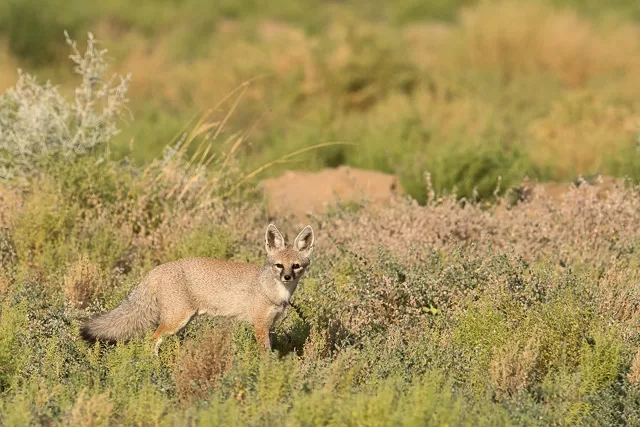About
Top Experiences
Type of Journey
Subscribe to newsletter and stay updated
Read about our travel expeditions, new destinations, new pictures, latest trip schedules
The Desert National Park in Jaisalmer is a must-visit for wildlife enthusiasts who love to spend time in the company of nature. It is spread over an area of 23000 square kilometers and is home to several exotic animal and bird species including desert fox, desert cat and many birds of prey. The unique and delicate ecological system of the Thar leads to an interesting and different natural life in this region. One of the most striking features of the Desert National Park is its unique location in the middle of seas of sand in the Thar desert. Needless to say, it is a brilliant case of the biological community of the Thar desert and its assorted natural wildlife.
The Desert National Park is home to one of the heaviest flying birds in the world- the endangered Great Indian Bustard. The place has fossil evidence dating back to the Jurassic period which indicates a hot and humid climate characterized by dense forests. The Desert National Park is a bird watcher’s paradise where one can explore the real bounties of nature. One of the most ideal ways to see the wildlife of Desert National Park is by a jeep safari.
OVERVIEW
Location: Jaisalmer District, Rajasthan, India
Nearest Airport: Jaisalmer airport
How to reach: 2 hours from Jaisalmer airport
Famous for: Birds of prey,
Great Indian Bustard
Best time to visit: July to March
WHAT TO SEE
Mammals: Desert Fox, Indian Fox, Chinkara, Desert Cat, Blackbuck, Indian Wolf, Hedgehog, Nilgai etc.
Birds: Great Indian Bustard, Cream Colored Courser, Eastern Imperial Eagle, Falcons, Eagles, Vultures, Larks, Demoiselle Crane, Macqueen’s Bustard, Sandgrouse, Long-Legged Buzzard, Bee-Eaters, Shrikes, Honey Buzzards, kites, chats, babblers etc.
The Desert National Park boasts of a typical Thar Desert ecosystem with about 20% of the park composed of extensive sand dunes. Another interesting feature of the landscape is the craggy rocks and salt lakes. Fixed dunes and pliable sands stretch as far as the eyes can see. Huge fossil remnants of tree trunks are found at the nearby Akal Wood fossil park. These fossil remnants and seashells record the desert’s geological history.
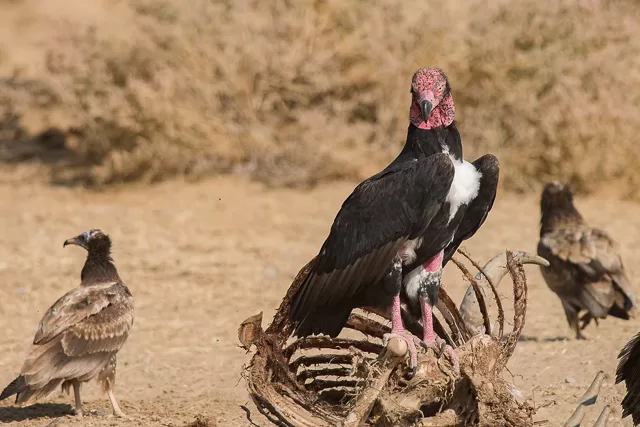
More than 60% of the Desert National Park is semi-arid desert and the seemingly barren lands dissolve at the horizon touching Pakistan. The warm sands of the Desert National Park extend beyond Jaisalmer and house an astounding variety of animals and birds like Chinkara, blackbuck, nilgai, wolves, desert cats, the Spotted, and Tawny Eagle and the EndangeredGreat Indian Bustard. A man-made canal cuts through the reserve, fragmenting the habitat.
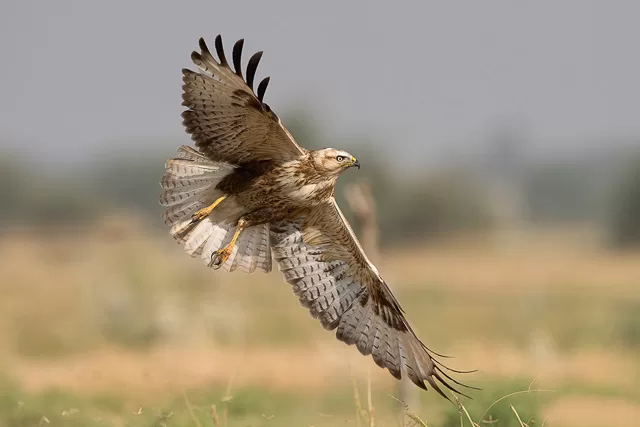
One of the birding stretches from San to Jaisalmer and has vast areas of open on both sides with rocky patches in between. Some species of birds that can be spotted on the way are Laggar Falcon, Tawny Eagle, Red-tailed Wheatear, Chestnut-bellied Sandgrouse and large groups of larks
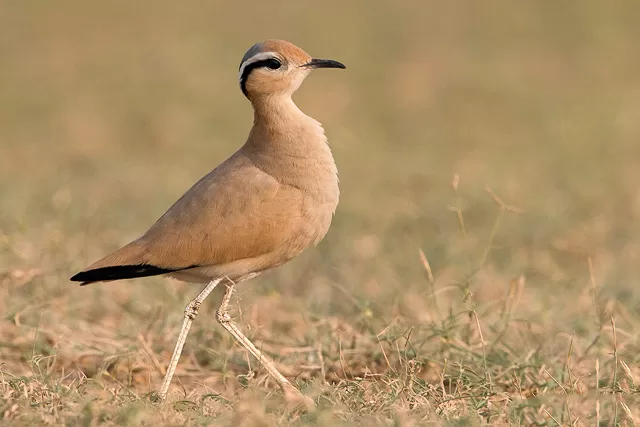
This park is one of the best places to see and photograph the graceful Great Indian Bustards. The main habitat for the Great Indian Bustard is the Sudasari. It is an excellent place to spot Macqueen’s Bustard, Cream-coloured Coursers, falcons, and vultures. Tourists must be careful about vultures and eagles that circle the skies of the grasslands near Sudarsi. Different species like Egyptian, White-rumped, Indian, and Red-headed vultures are attracted to carcasses of livestock.
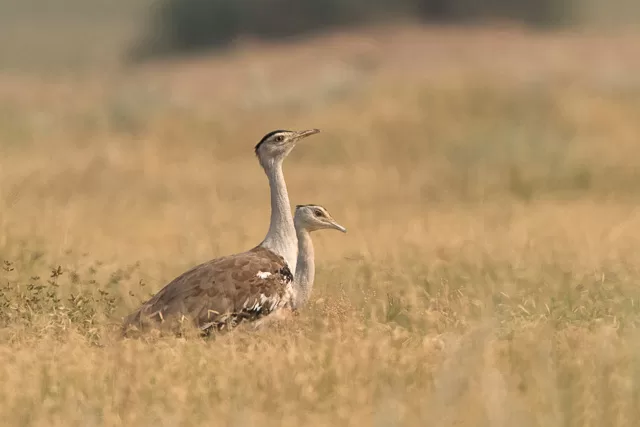
Kuldhara’s surreal rocky terrain is the ideal habitat for the Strioalted Bunting, Trumpeter Finch, Desert Larks, and Red-tailed Wheatear. Visit the ruins of the village, which was once prosperous in the 13th century but was abandoned under mysterious circumstances in the 19th century. Tourists can get a glimpse of the past life from vessels that are still present inside the huts. It is located 45 km away from Sam.
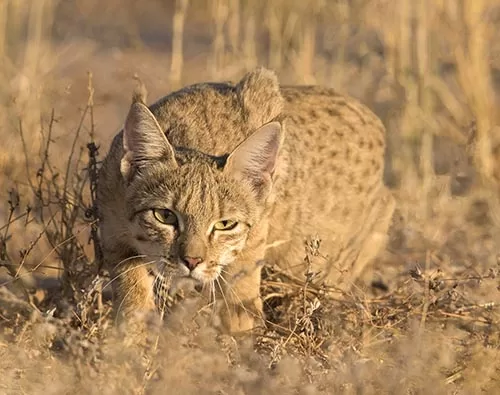
The Netsi Talab, an oasis in the desert, is a major attraction of the area. The lake is surrounded by greener pastures. Other highlights of the place include the Demoiselle Cranes, Chestnut-bellied, Black-bellied, and the Spotted Sandgrouse, which frequent this area to drink water. Also, visit the Water Pipit in this region. Enjoy a full-day birding session in this region, located 100 km away from Sam.
